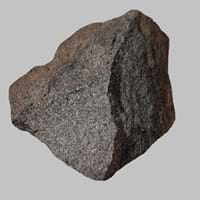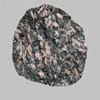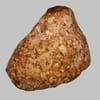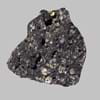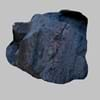Definition
Appinite is an igneous rock in which the crystals are so fine grained that individual minerals cannot be easily distinguished
Rapakivi Granite is a hornblende-biotite Granite containing large rounded crystals of orthoclase which are mantled with oligoclase
Origin
Unknown
Finland, Europe
Discoverer
Unknown
Jakob Sederholm
Etymology
From the variety of Lamprophyre Greek lampros bright and shining + porphureos purple
From Finnish Rapakivi which stands for crumbly rock
Class
Igneous Rocks
Igneous Rocks
Sub-Class
Durable Rock, Medium Hardness Rock
Durable Rock, Hard Rock
Other Categories
Coarse Grained Rock, Fine Grained Rock, Opaque Rock
Coarse Grained Rock, Opaque Rock
Texture
Porphyritic
Granular, Phaneritic
Color
Black, Bluish - Grey, Brown, Dark Greenish - Grey, Green, Grey
Black, Grey, Orange, Pink, White
Durability
Durable
Durable
Scratch Resistant
Yes
Yes
Appearance
Dull, Banded and Foilated
Veined or Pebbled
Interior Uses
Decorative Aggregates, Homes, Interior Decoration
Bathrooms, Countertops, Decorative Aggregates, Entryways, Floor Tiles, Flooring, Homes, Hotels, Interior Decoration, Kitchens, Stair Treads
Exterior Uses
Paving Stone, Garden Decoration, Office Buildings
As Building Stone, As Facing Stone, Office Buildings, Paving Stone, Resorts
Other Architectural Uses
Whetstones
Not Yet Used
Construction Industry
As Dimension Stone, Cement Manufacture, for Road Aggregate, Making natural cement, Manufacture of Magnesium and Dolomite Refractories
As Dimension Stone
Medical Industry
Taken as a Supplement for Calcium or Magnesium
Not Yet Used
Antiquity Uses
Artifacts, Monuments, Sculpture, Small Figurines
Artifacts, Monuments, Sculpture, Small Figurines
Commercial Uses
An Oil and Gas Reservoir, As a Feed Additive for Livestock, Gemstone, Metallurgical Flux, Production of Lime, Soil Conditioner
Cemetery Markers, Commemorative Tablets, Creating Artwork, Curling, Laboratory bench tops, Tombstones
Types
Not Available
Igneous Protolith Granite, Sedimentary Protolith Granite, Mantle Granite, Anorogenic Granite and Hybrid Granite
Features
Always found as volcanic pipes over deep continental crust, Host rock for Diamond, Is one of the oldest rock, Surfaces are often shiny
Available in Lots of Colors and Patterns, It is One of the Oldest, Strongest and Hardest Rock
Archaeological Significance
Famous Monuments
Data Not Available
Data Not Available
Famous Sculptures
Data Not Available
Data Not Available
Pictographs
Used
Not Used
Petroglyphs
Used
Not Used
Formation
The formation of Appinite takes place deep beneath the Earth’s surface at around 150 to 450 kms, and are erupted rapidly and violently.
Granite is an igneous rock which is very hard, crystalline and is visibly homogeneous in texture and forms by melting of continental rocks
Mineral Content
Amphibole, Carbonate, Garnet, Micas, Olivine, Phlogopite, Pyroxene
Amphibole, Biotite, Feldspar, Hornblade, Micas, Muscovite or Illite, Plagioclase, Pyroxene, Quartz
Compound Content
Aluminium Oxide, NaCl, CaO, Iron(III) Oxide, FeO, Potassium Oxide, MgO, MnO, Sodium Oxide, Silicon Dioxide, Titanium Dioxide
Aluminium Oxide, CaO, Iron(III) Oxide, FeO, Potassium Oxide, MgO, MnO, Sodium Oxide, Phosphorus Pentoxide, Silicon Dioxide, Titanium Dioxide
Types of Metamorphism
Burial Metamorphism, Cataclastic Metamorphism, Contact Metamorphism, Hydrothermal Metamorphism, Regional Metamorphism
Burial Metamorphism, Cataclastic Metamorphism, Contact Metamorphism
Types of Weathering
Chemical Weathering, Mechanical Weathering
Biological Weathering, Chemical Weathering, Mechanical Weathering
Types of Erosion
Chemical Erosion, Water Erosion, Wind Erosion
Chemical Erosion, Coastal Erosion, Water Erosion, Wind Erosion
Grain Size
Fine to Coarse Grained
Large and Coarse Grained
Fracture
Conchoidal
Not Available
Porosity
Very Less Porous
Less Porous
Luster
Subvitreous to Dull
Dull to Grainy with Sporadic parts Pearly and Vitreous
Compressive Strength
Not Available
Cleavage
Conchoidal
Not Available
Toughness
Not Available
Not Available
Specific Gravity
2.86-2.87
2.6-2.7
Transparency
Translucent to Opaque
Opaque
Density
2.95-2.96 g/cm3
2.6-2.8 g/cm3
Specific Heat Capacity
Not Available
Resistance
Heat Resistant, Impact Resistant
Heat Resistant, Wear Resistant
Deposits in Eastern Continents
Asia
Russia
China, India, Iran, Saudi Arabia, Sri Lanka, Taiwan, Thailand, Turkey, Vietnam
Africa
Angola, Botswana, Cameroon, Ethiopia, South Africa
Angola, Egypt, Madagascar, Namibia, Nigeria, South Africa
Europe
England, Hungary, Iceland, United Kingdom
Austria, Belgium, Finland, France, Germany, Italy, Norway, Sardinia, Spain, Switzerland, The Czech Republic, Venezuela
Others
Antarctica, Greenland
Not Yet Found
Deposits in Western Continents
North America
Canada, Mexico, USA
Canada, USA
South America
Argentina, Colombia, Ecuador
Not Yet Found
Deposits in Oceania Continent
Australia
New South Wales, New Zealand, Queensland, South Australia, Western Australia
Not Yet Found
All about Appinite and Rapakivi Granite Properties
Know all about Appinite and Rapakivi Granite properties here. All properties of rocks are important as they define the type of rock and its application. Appinite and Rapakivi Granite belong to Igneous Rocks.Texture of Appinite is Porphyritic whereas that of Rapakivi Granite is Granular, Phaneritic. Appinite appears Dull, Banded and Foilated and Rapakivi Granite appears Veined or Pebbled. The luster of Appinite is subvitreous to dull while that of Rapakivi Granite is dull to grainy with sporadic parts pearly and vitreous. Appinite is available in black, bluish - grey, brown, dark greenish - grey, green, grey colors whereas Rapakivi Granite is available in black, grey, orange, pink, white colors. The commercial uses of Appinite are an oil and gas reservoir, as a feed additive for livestock, gemstone, metallurgical flux, production of lime, soil conditioner and that of Rapakivi Granite are cemetery markers, commemorative tablets, creating artwork, curling, laboratory bench tops, tombstones.
